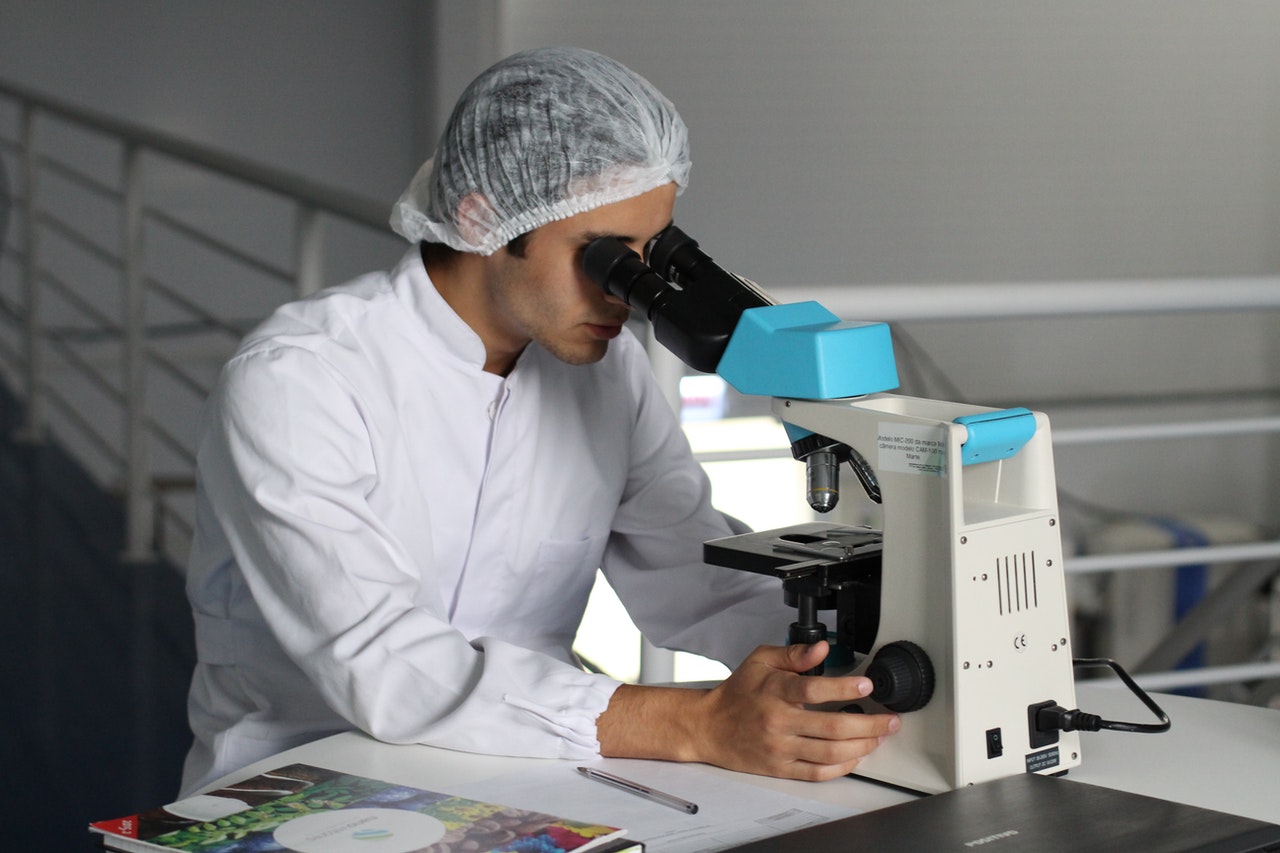- Vaccines could become available in Q1 of 2021
- CEPI supporting developing of 9 vaccines
- COVAX making 2 billion doses available in 2021
- Enough to vaccinate 20% of population – focusing on at-risk populations
- Regulators will ensure high safety standards; ‘even vaccines with 50% efficacy could have public health impact’
When will it end? It’s the question on everyone’s mind since spring 2020 when the WHO declared a global pandemic. COVID-19 has dominated healthcare, social lives and economic activity ever since.
While management of COVID-19 has improved over time and death rates are falling, all eyes are on the global search for vaccines with the potential to end the crisis. Dozens of vaccine candidates are in the pipeline and some are likely to be approved early in 2021.
The Coalition for Epidemic Preparedness Innovations (CEPI) is coordinating a large number of researchers from the public and private sector, funding trials and preparing for global distribution of vaccines next year. Dr Melanie Saville, Director of Vaccine Development at CEPI, is on the frontline as a new chapter in the history of vaccines is written.
‘We are hopeful that vaccines will begin to become available in Q1 of 2021, but we’ll at first find ourselves in a situation where demand vastly outstrips supply,’ she explains. CEPI is working with GAVI, WHO and industry partners on COVAX – a global initiative that aims to deliver 2 billion doses of COVID-19 vaccine next year.
The vaccines will be allocated until participating countries have enough to vaccinate 20% of their populations. ‘This is the fastest and most efficient – as well as the fairest – way of ending the acute phase of the pandemic globally.’
CEPI is a young organisation managing an unprecedented challenge: developing a range of vaccines against a new pathogen in less than a year. It was founded in 2017 to tackle existing infectious diseases such as Middle East Respiratory Syndrome (MERS) and Chikungunya virus – as well as a hypothetical ‘Disease X’ with the capacity to trigger global chaos. SARS-CoV-2 fit the bill all too well.
The Coalition is currently supporting a portfolio of nine COVID-19 vaccine candidates. We asked Dr Saville what she looks for when evaluating potential vaccines. ‘Speed, scale and access,’ she says. Within that, there are other criteria including how many doses are required, the temperature at which it must be stored and, of course, how effective it is in the target populations.
‘It’s very complex to weigh up what each individual candidate or platform can offer, in addition to preventing disease and potentially preventing transmission,’ she says, adding that some vaccines might work well in young adults, another might be suitable for pregnant women, and others offer better protection in older people. ‘We should avoid giving the impression that one vaccine will provide the answer to everything.’
Read: Coronavirus vaccines: Who gets them first?
Managing expectations will be particularly important if vaccines are not protective in all who receive them. The US medicines regulator has said it will consider vaccines that are at least 50% more effective than placebo. With some billing vaccines are the magic bullet that will eliminate COVID-19, the scope for disappointment is considerable.
Dr Saville says the distinct characteristics of each vaccine will need to be modelled to determine their impact. ‘For example, or example, what would be the impact in the community of a 70% efficacious vaccine rather than 50%, or one that can prevent transmission as opposed to one that prevents disease? All of these factors need to be built in, to create the best vaccination programme.’
In the end, it seems likely that several vaccines will be approved and delivered through 2021. To be approved, they will have to meet the same high safety standards demanded of all vaccines, but their ability to prevent disease in all who are at risk will be imperfect.
‘While this development work is necessarily happening at pace, it may not deliver quite the optimal vaccines that we would like in terms of efficacy,’ Dr Saville says. ‘Nonetheless, even vaccines that demonstrate efficacy of as low as 50% could have a huge public health impact.’
Read our full interview with Dr Melanie Saville below

How has CEPI supported the development of vaccines against SARS-CoV-2?
We recognized the significance of the threat posed by COVID-19 early on, and moved urgently to coordinate with global health authorities and vaccine developers to build a diverse portfolio of vaccine candidates based on a range of vaccine technologies. One of the first vaccine candidates we invested in entered the clinic only nine weeks after the genetic sequence of the virus had been released. That’s absolutely unprecedented, and a huge credit to everybody involved for recognizing the urgency of the situation and acting swiftly.
How many vaccines is CEPI working on?
CEPI is currently supporting a portfolio of nine vaccine candidates. We have selected these based on their scientific merit, but also our three core criteria of speed, scale and access. Speed, because there’s no time to lose so we need vaccines that can be developed rapidly. Scale, because we’ll need billions of doses of vaccine to end the pandemic so vaccines need to be manufactured in huge quantities. And access because the fastest way to end the pandemic is to protect those most at risk, wherever they are in the world, so vaccine developers we engage with must be committed to this principle.
In parallel to our core R&D work, CEPI has partnered with Gavi and the WHO to co-lead COVAX, a global initiative which aims to ensure equitable access to COVID-19 vaccines. Initial demand for COVID-19 vaccines is going to vastly outstrip supply, so this scarce resource will need to be carefully managed so it can have the maximum impact. COVAX is working with industry partners to produce 2 billion doses of vaccine, and distribute them equitably – through a mechanism called the COVAX Facility – to vulnerable populations in all participating countries in 2021.
CEPI hopes to progress at least 3 COVID-19 vaccines to licensure. How will you pick the ‘winners’? Would a single-dose vaccine of lower efficacy hold more appeal than a two-dose vaccine?
It’s very complex to weigh up what each individual candidate or platform can offer, in addition to preventing disease and potentially preventing transmission.
You might find that one vaccine works really well in 20-year-olds but doesn’t work so well in the elderly. So, we have to look at who we are trying to prevent disease in, and to make sure we have a portfolio of vaccines that can protect at-risk populations, which are diverse. You would ideally want a vaccine that can be used in pregnant women, and a vaccine that you might want to use in children, if needed – and that might be different from another vaccine. We should avoid giving the impression that one vaccine will provide the answer to everything.

What are the other criteria CEPI looks at?
We think about manufacturing, scalability and delivery – and the key point here of one-dose versus two-doses. The ideal would be a one-dose vaccine for a few reasons. One is faster protection: a single dose could be used potentially to control an outbreak as well as vaccinate people for general protection, whether they’re at significant risk or not. There’s also far more compliance with a single-dose regimen. And for vaccination campaigns, a single dose is far easier and far less expensive. In low-income and-middle-income countries, a single-dose campaign is likely to be more successful than a two-dose regimen. We want to prioritise adding a single-dose regimen.
And then, there’s the cold chain, which is important from an access perspective. Whether your vaccine needs to be stored at minus 70°C or 4°C are very different things. You’re adding a huge amount of complexity if you need to build a minus 70°C requirement into a cold chain. Obviously, we want to move those vaccine candidates forward with the best overall profile. I’d rather give a vaccine that’s at minus 70°C and 90% protective than one that can be stored at 2°C to 8°C but which is only 10% protective, as an example. You just have to weigh everything up together to get the best balance.
How do you weigh the importance of preventing disease in the vaccinated individual and preventing transmission to others?
The FDA has set the bar at 50% more effective than placebo at preventing the disease, and obviously, you’d want higher than that.
The Holy Grail is prevention of infection – prevention of transmission from one person to another. But I think we need to manage people’s expectations. A good way of looking at it is to consider seasonal influenza. We manage it well globally through vaccination, which is extremely successful at preventing morbidity and mortality in the elderly and high-risk populations even though in the elderly, vaccines are not 100% protective.
So, with COVID-19, I think we have to recognise that the primary purpose is prevention of disease. The ideal situation would be prevention of transmission, but if you asked any vaccinologist, they’d recognise that prevention of transmission is an extremely high bar that very few vaccines can actually reach.
What’s important is that we model different scenarios to see the potential impact of different vaccines – so, for example, what would be the impact in the community of a 70% efficacious vaccine rather than 50%, or one that can prevent transmission as opposed to one that prevents disease. All of these factors need to be built in, to create the best vaccination programme.

Do you expect that the first vaccines against COVID might be overtaken in a couple of years by ‘better’ vaccines?
Development of vaccines for COVID-19 is moving forward rapidly, with multiple platforms using the Spike protein, and we hope that some of these will be shown to be safe and effective. While this development work is necessarily happening at pace, it may not deliver quite the optimal vaccines that we would like in terms of efficacy. Nonetheless, even vaccines that demonstrate efficacy of as low as 50% could have a huge public health impact.
In the medium term we should expect improvements to the vaccines in several ways. These include looking more critically at optimizing target proteins; utilizing platforms that take longer to develop but are effective for many other targets (i.e. live attenuated vaccines that may offer a single dose option); making improvements to the manufacturing process to increase yield; and improving cold chain requirements that with some of the first vaccines may be sub-optimal.
Are you concerned about whether future COVID vaccines will be accepted by the public, particularly if they are of relatively low efficacy? Does CEPI do any work on vaccine acceptance?
The acceptance of future vaccines is a major concern, and everybody in the public health community has a role to play in building public trust and confidence in vaccines. CEPI and our vaccine development partners can support this effort, for example through open and transparent communication about the rigorous clinical development processes which generate safety and efficacy data for new vaccines.
As we mainly work in the R&D space, we are also paying particular attention to community participation for the clinical trials, to ensure good communication of the risks and potential benefits of clinical trial participation.
Does CEPI have a say in where the first doses will be deployed and who will be prioritised?
The allocation of vaccines procured by the COVAX Facility, once licensed and approved, will be guided by an Allocation Framework released by WHO following the principle of fair and equitable access, ensuring no participating economy will be left behind. Under this Framework all countries participating in the COVAX Facility – regardless of income level – will be allocated doses simultaneously until all countries have enough vaccines to cover 20% of their population. In most countries this would be enough vaccine to protect those most at risk from the virus – including health workers and elderly adults or adults with co-morbidities.
Many industrialised countries have already placed orders for vaccines. How will CEPI/WHO compete when your funds are still not committed?
There are 69 higher income economies already signed up to the COVAX Facility, and a further 33 pending. This is in addition to 92 economies that are eligible for support for the procurement of vaccines through the COVAX Advanced Market Commitment (AMC). This means that 161 economies, representing roughly two thirds of the global population in total, are now either committed to or eligible for the COVAX Facility, with more to follow. Now that we have these formal commitments to join, the COVAX Facility will start signing agreements with vaccine manufacturers and developers, which are partners in the COVAX effort, to secure the doses needed to end the acute phase of the pandemic by the end of 2021.
When do you expect the first vaccines in CEPI’s portfolio to be available and how long might it take to formally ‘end’ the pandemic?
Vaccine development is complex and unpredictable, and even though there are now multiple vaccine candidates in Phase 3 trials around the world it’s still impossible to say with any certainty when safe and effective vaccines will become available.
We are hopeful that vaccines will begin to become available in Q1 of 2021, but we’ll at first find ourselves in a situation where demand vastly outstrips supply. Along with our COVAX partners we aim to produce 2 billion doses of vaccine by the end of 2021, and make them available to all countries participating in the COVAX Facility so they can vaccinate those most at risk. This is the fastest and most efficient – as well as the fairest – way of ending the acute phase of the pandemic globally.
Why was CEPI founded in 2017 and what diseases were in its sights at the beginning?
CEPI was launched at Davos in 2017 as the result of a consensus that a coordinated, international, and intergovernmental plan was needed to develop and deploy new vaccines to prevent future epidemics.
The global need for an organisation like CEPI was recognised after the devastating West African Ebola epidemic. The world’s response to this crisis fell tragically short. A vaccine that had been under development for more than a decade was not deployed until over a year into the epidemic. That vaccine was shown to be highly effective, suggesting that much of the epidemic could have been prevented. It was evident that we needed a better system to speed the development of vaccines against known epidemic threats.
Before the emergence of COVID-19, CEPI’s priority diseases were based on the WHO’s R&D Blueprint for epidemic diseases. They included Lassa virus, Middle East Respiratory Syndrome (MERS), Nipah virus, Rift Valley Fever virus and Chikungunya virus.
How has this helped in responding to the SARS-CoV-2 outbreak?
There are two key ways in which our previous experiences have helped us in responding to COVID-19. Firstly, several of the vaccine developers now working on COVID-19 vaccines had been developing MERS vaccines under CEPI partnership agreements when the current outbreak began and they were able to take what they had learned about coronavirus vaccine development to rapidly begin developing vaccines against COVID-19.
Secondly, prior to the COVID-19 pandemic, CEPI already funded new and innovative platform technologies that have the potential to radically accelerate the development and manufacture of vaccines to rapidly respond to future outbreaks of emerging infectious diseases and unknown pathogens, known as ‘Disease X’.
COVID-19 is CEPI’s first ‘Disease X’. Very quickly after the COVID-19 virus was identified we reached out to our existing partners that were developing platform technology that we thought could be applicable to this virus to discuss the potential for moving forward on vaccine discovery. We’ve been able to fund several of those partners to use their platform technologies to work on developing vaccines against COVID-19.




